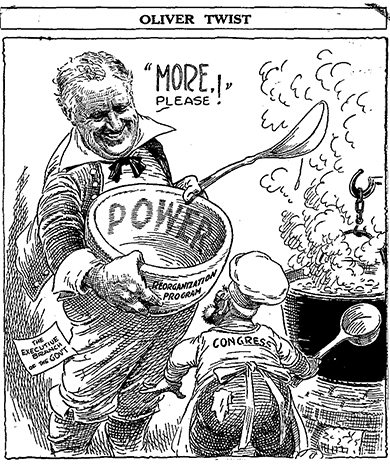| << Chapter < Page | Chapter >> Page > |
Roosevelt won his second term in a landslide, but that did not mean he was immune to criticism. His critics came from both the left and the right, with conservatives deeply concerned over his expansion of government spending and power, and liberals angered that he had not done more to help those still struggling. Adding to Roosevelt’s challenges, the Supreme Court struck down several key elements of the First New Deal, angering Roosevelt and spurring him to try and stack the courts in his second term. Still, he entered his new term with the unequivocal support of the voting public, and he wasted no time beginning the second phase of his economic plan. While the First New Deal focused largely on stemming the immediate suffering of the American people, the Second New Deal put in place legislation that changed America’s social safety net for good.
While many people supported Roosevelt, especially in the first few years of his presidency, the New Deal did receive significant criticism, both from conservatives who felt that it was a radical agenda to ruin the country’s model of free enterprise, and from liberals who felt that it did not provide enough help to those who needed it most ( [link] ).

Industrialists and wealthy Americans led the conservative criticism against the president. Whether attacking his character or simply stating that he was moving away from American values toward fascism and socialism, they sought to undermine his power and popularity. Most notably, the American Liberty League—comprised largely of conservative Democrats who lamented the excesses of several of Roosevelt’s New Deal programs—labeled the AAA as fascist and proclaimed later New Deal programs to be key threats to the very nature of democracy. Additional criticism came from the National Association of Manufacturers, which urged businessmen to outright ignore portions of the NRA that promoted collective bargaining, as well as subsequent labor protection legislation. In 1935, the U.S. Supreme Court dealt the most crushing blow to Roosevelt’s vision, striking down several key pieces of the New Deal as unconstitutional. They found that both the AAA and the NIRA overreached federal authority. The negation of some of his most ambitious economic recovery efforts frustrated Roosevelt greatly, but he was powerless to stop it at this juncture.
Meanwhile, others felt that Roosevelt had not done enough. Dr. Francis E. Townsend of California was one who felt that Roosevelt had failed to adequately address the country’s tremendous problems. Townsend, who was a retired dentist, proposed an expansive pension plan for the elderly. The Townsend Plan, as it was known, gained a great deal of popularity: It recommended paying every citizen over sixty who retired from work the sum of $200 per month, provided they spend it in thirty days. Another figure who gained national attention was Father Charles Coughlin. He was a “radio priest” from Michigan who, although he initially supported the New Deal, subsequently argued that Roosevelt stopped far too short in his defense of labor, monetary reform, and the nationalization of key industries. The president’s plan, he proclaimed, was inadequate. He created the National Union for Social Justice and used his weekly radio show to gain followers.

Notification Switch
Would you like to follow the 'U.s. history' conversation and receive update notifications?